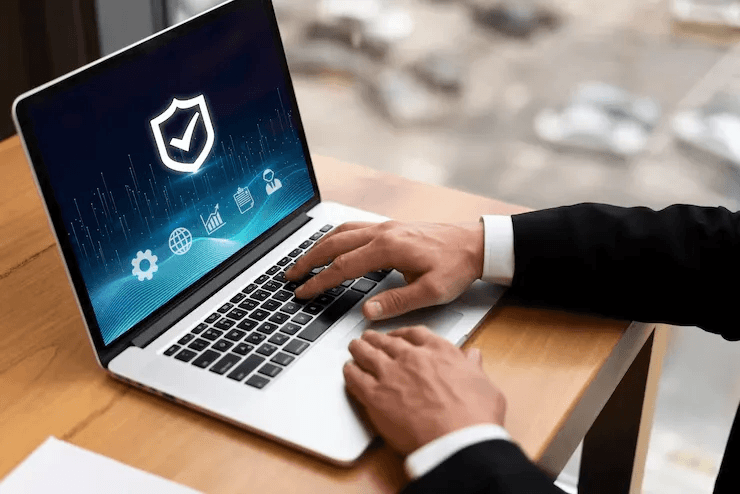Mastering Cyber Compliance: Protecting Your Business in a Digital Age

Businesses continue to face an ever-evolving array of cyber threats, making cyber compliance necessary.
Mastering cyber compliance is essential for safeguarding your business and maintaining trust in an interconnected world. From ransomware attacks to data breaches, the risks are growing in scale and sophistication.
What is the Importance of Cyber Compliance in Modern Businesses?
Cyber compliance is the practice of aligning business operations with legal, ethical, and industry-specific standards to protect data integrity, confidentiality, and availability.
Modern businesses must prioritize compliance to:
Mitigate risks: Non-compliance exposes companies to data breaches, financial loss, and reputational damage.
Build customer trust: Adhering to compliance standards assures stakeholders their data is safe.
Ensure legal protection: Compliance shields businesses from fines, lawsuits, and regulatory actions.
What are Key Cybersecurity Regulations and Standards?
Global and industry-specific regulations set the framework for cyber compliance. Some prominent standards include:
General Data Protection Regulation (GDPR): Governing data privacy for EU citizens.
California Consumer Privacy Act (CCPA): Protecting consumer data in California.
Health Insurance Portability and Accountability Act (HIPAA): Securing patient health information.
Payment Card Industry Data Security Standard (PCI DSS): Ensuring safe handling of payment data.
What are the Most Common Challenges in Achieving Cyber Compliance?
Evolving Regulatory Landscape
Cybersecurity regulations are constantly changing to address emerging threats and technologies. Keeping up with new laws and amendments requires constant monitoring and adjustments.
Complex IT Ecosystems
Modern businesses rely heavily on diverse IT environments, including cloud platforms, remote work setups, and third-party vendors. Ensuring compliance across such a fragmented ecosystem can be daunting.
Limited Resources
Many organizations, particularly small and medium-sized businesses, struggle with inadequate budgets, staffing, or expertise to implement and maintain compliance measures. In such cases, having a vCISCO on board can be extremely helpful and convenient.
Data Management Challenges
Managing vast amounts of sensitive data, that is often spread across multiple systems, makes it difficult to maintain consistent security controls, especially when identifying and classifying data for compliance purposes.
Cost of Compliance
The financial burden of implementing compliance measures, conducting audits, and maintaining security tools can be prohibitive, especially for startups or smaller organizations.
Balancing Security and Usability
Compliance measures, like multi-factor authentication or encryption, can sometimes hinder usability. Striking the right balance between security and efficiency is often a challenge.
Emerging Cyber Threats
Cyber risks evolve rapidly, with attackers exploiting new vulnerabilities before businesses can adapt. Staying compliant with standards that often lag behind real-world threats can leave organizations exposed.
Steps to Develop a Cyber Compliance Strategy
An effective cyber compliance strategy requires a clear roadmap.
Here’s how to create one:
Identify the standards that affect your industry and locality.
Conduct a risk assessment to identify vulnerabilities.
Establish rules for data handling, access control, and incident response.
Educate employees on compliance protocols and cybersecurity awareness.
Regularly monitor and audit compliance efforts to identify gaps and improve processes.
Leverage external expertise, such as vCISO services, for professional guidance.
What is the Role of Risk Assessments in Cyber Compliance?
Risk assessments are the cornerstone of an effective cyber compliance strategy.
They provide a systematic approach to identifying, evaluating, and addressing vulnerabilities within an organization’s digital environment.
Risk assessments help uncover potential weaknesses in your organization’s infrastructure, processes, and policies. These may include outdated software, poorly configured networks, or insufficient access controls — all of which could lead to non-compliance.
They also categorize threats based on their likelihood and potential impact. This allows businesses to focus resources on mitigating the most critical vulnerabilities first.
Risk assessments reveal gaps in your current incident response plans. Understanding these vulnerabilities enables businesses to develop more effective strategies for detecting, responding to, and recovering from security breaches while maintaining compliance.
Best Practices for Maintaining Data Privacy and Security
Encrypt data
Implement access controls
Regularly update software
Monitor activity
Develop an effective incident response plan.
What are the Benefits of Automated Compliance Tools?
Automated tools streamline compliance efforts and offer numerous advantages:
Increased accuracy
Real-time monitoring
Time savings
Scalability
Consequences of Non-Compliance
Failing to meet compliance standards can result in:
Financial penalties
Reputation damage
Legal action
Operational disruptions
Cyber compliance is no longer just an IT responsibility — it’s a business imperative.
By understanding regulations, addressing challenges, and adopting best practices, organizations can protect themselves from threats and penalties.
Leverage the expertise of CyberShield CSC to build a comprehensive compliance framework tailored to your business needs.
Frequently Asked Questions
What is Cyber Compliance?
Cyber compliance refers to adhering to regulatory standards and industry best practices that protect sensitive data and systems from cyber threats.
Why is Cyber Compliance important for businesses?
Cyber compliance helps protect sensitive information, maintain customer trust, avoid financial penalties, and minimize the risk of cyberattacks.
What are the common challenges in achieving cyber compliance?
Common challenges include staying up-to-date with evolving regulations, managing complex IT ecosystems, human error, and resource limitations.
How can a vCISO service help my organization with cyber compliance?
A virtual Chief Information Security Officer (vCISO) provides expert advice and guidance on implementing cybersecurity policies and tailored compliance strategies.